When selling properties, real estate agents have various marketing tools at their disposal. One of the most effective and versatile tools is the real estate brochure. This marketing tool is a comprehensive information package that agents use to advertise properties for sale. The purpose of a real estate brochure is to inform potential buyers about the property’s features and benefits in a visually appealing and easily digestible format.
This article will explore the importance of real estate brochures, how to create them, and provide tips for successful brochure design. Whether you’re a real estate agent looking to improve your marketing strategy or a potential buyer interested in learning more about a property, this article will provide valuable insights into the world of real estate brochures.
What is a Real Estate Brochure?
A real estate brochure is a marketing tool used by real estate agents to showcase properties for sale. It is a printed document that provides potential buyers with detailed information about the property’s features, amenities, and benefits. Brochures often include high-quality photographs, floor plans, property descriptions, and contact information for the agent or agency.
The primary purpose of a real estate brochure is to inform and engage potential buyers. By providing comprehensive information in a visually appealing format, agents can capture the attention of buyers and generate interest in the property.
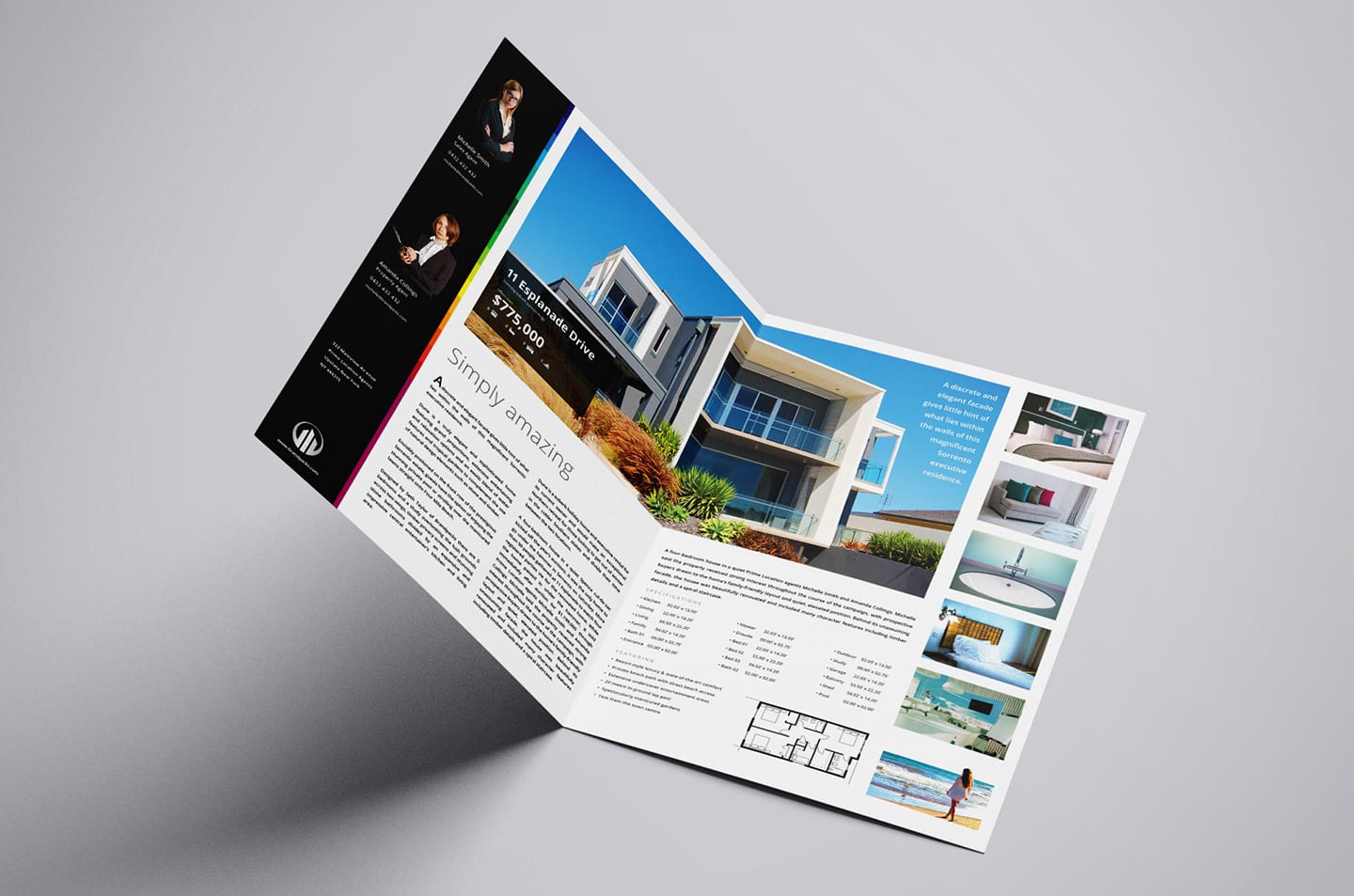
Why are Real Estate Brochures Important?
real estate brochures play a crucial role in the marketing process for several reasons:
- Comprehensive Information: Brochures allow agents to provide potential buyers with all the necessary details about a property, including its features, amenities, and location. This comprehensive information helps buyers make informed decisions.
- Visual Appeal: A well-designed brochure with high-quality photographs can capture the attention of potential buyers and create a positive first impression. Visual appeal is essential in grabbing the reader’s attention and generating interest in the property.
- Tangible Marketing Material: Unlike digital marketing materials, brochures are physical items that potential buyers can hold and take with them. This tangible aspect makes them more memorable and allows buyers to refer back to the information at their convenience.
- Wide Reach: Brochures can be distributed in various locations, such as real estate offices, open houses, and local businesses. This wide distribution allows agents to reach a larger audience and attract potential buyers who may not have otherwise seen the property.
- Professionalism: A well-designed and professionally printed brochure reflects positively on the agent and the property. It showcases the agent’s attention to detail and commitment to providing a high-quality marketing experience.
How to Create a Real Estate Brochure
Creating a real estate brochure involves several steps. Here is a step-by-step guide to help you create an effective and visually appealing brochure:
1. Define Your Target Audience
Before designing your brochure, it’s essential to identify your target audience. Consider the demographics, interests, and preferences of potential buyers for the property. This information will guide your design choices and content selection.
2. Gather Information
Collect all the necessary information about the property, including its features, amenities, location, and any unique selling points. Take high-quality photographs and gather floor plans, if available. This information will form the backbone of your brochure.
3. Choose a Design Template
Select a design template that aligns with the style and aesthetics of the property. Ensure the template allows for easy customization and includes sections for property descriptions, photographs, and contact information.
4. Customize the Template
Personalize the template by adding your branding elements, such as your logo and contact information. Insert the property photographs and descriptions, making sure to highlight the key features and benefits. Be mindful of font choices, colors, and overall layout to create a visually appealing design.
5. Proofread and Review
Thoroughly proofread the content and review the design for any errors or inconsistencies. Check for grammar and spelling mistakes, and ensure all contact information is accurate. It’s also helpful to have a second pair of eyes review the brochure for a fresh perspective.
6. Print and Distribute
Once you’re satisfied with the design and content, it’s time to print the brochures. Choose a high-quality printing service to ensure the colors and images are accurately reproduced. Distribute the brochures in strategic locations, such as real estate offices, open houses, and local businesses.
Examples
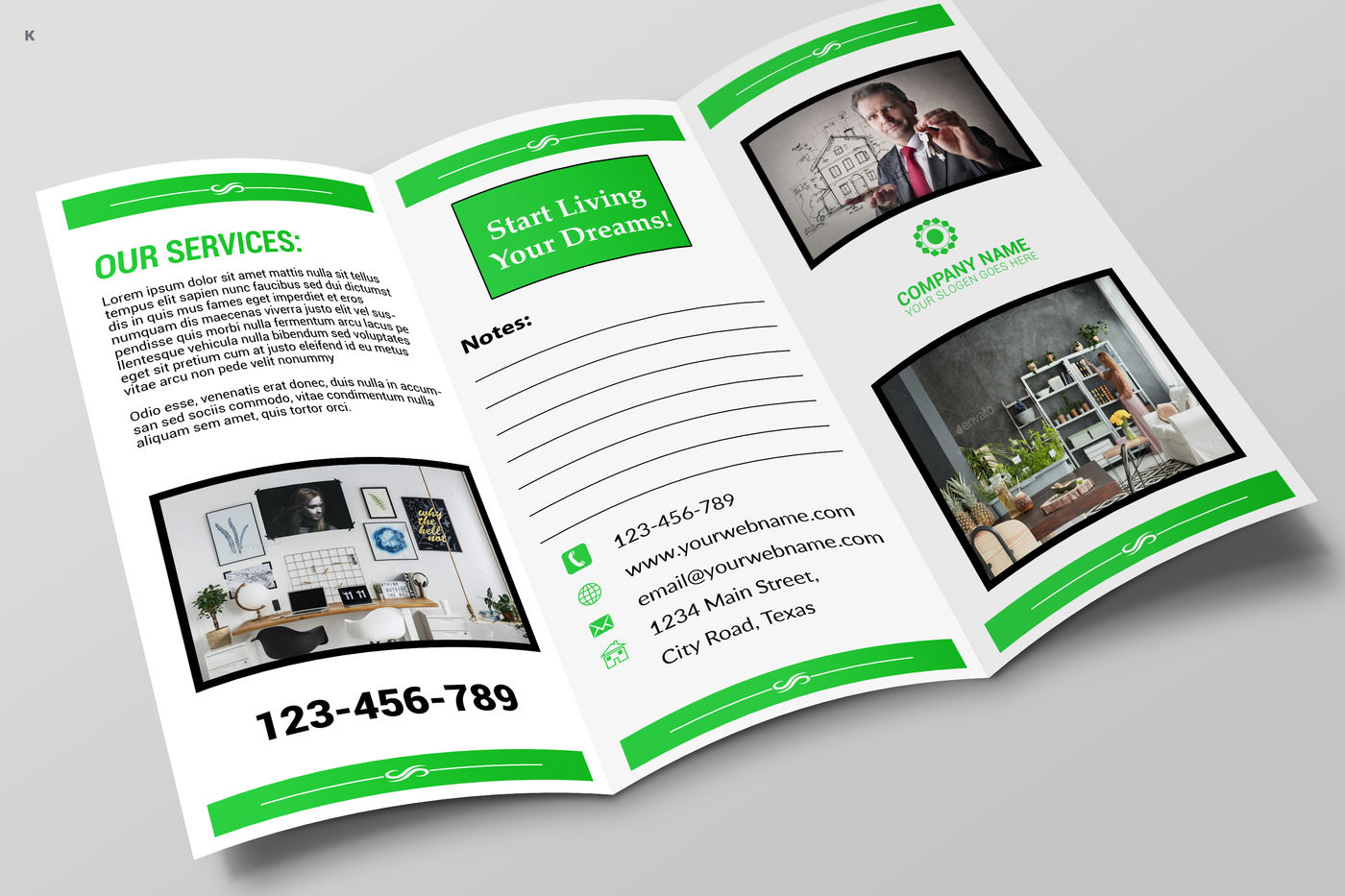
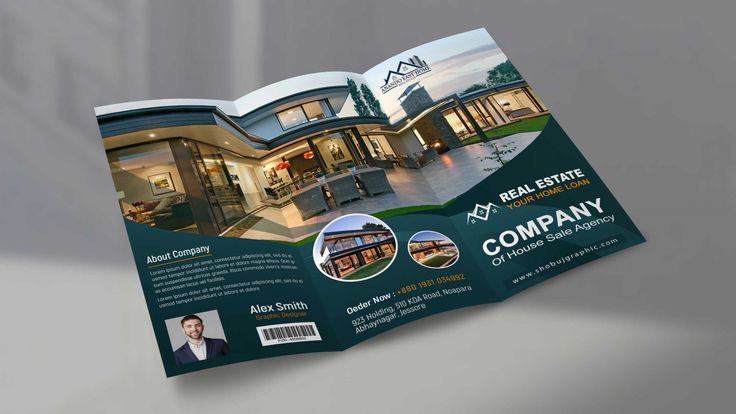
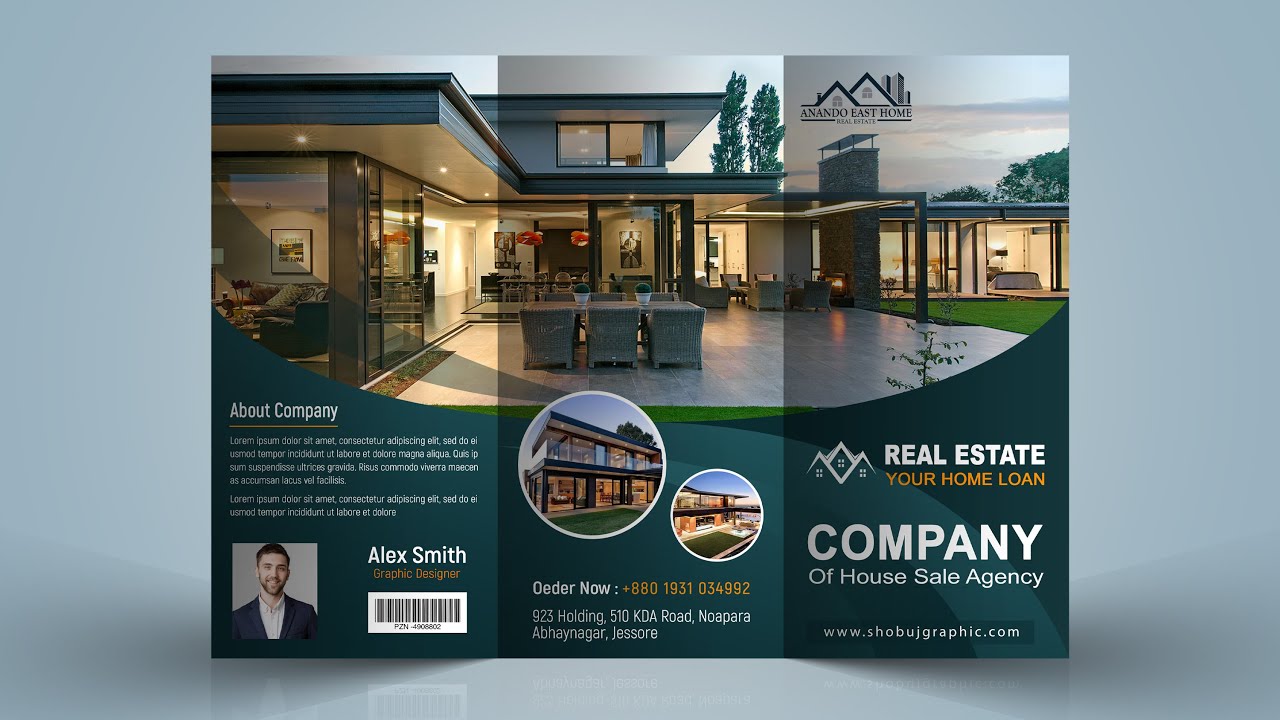
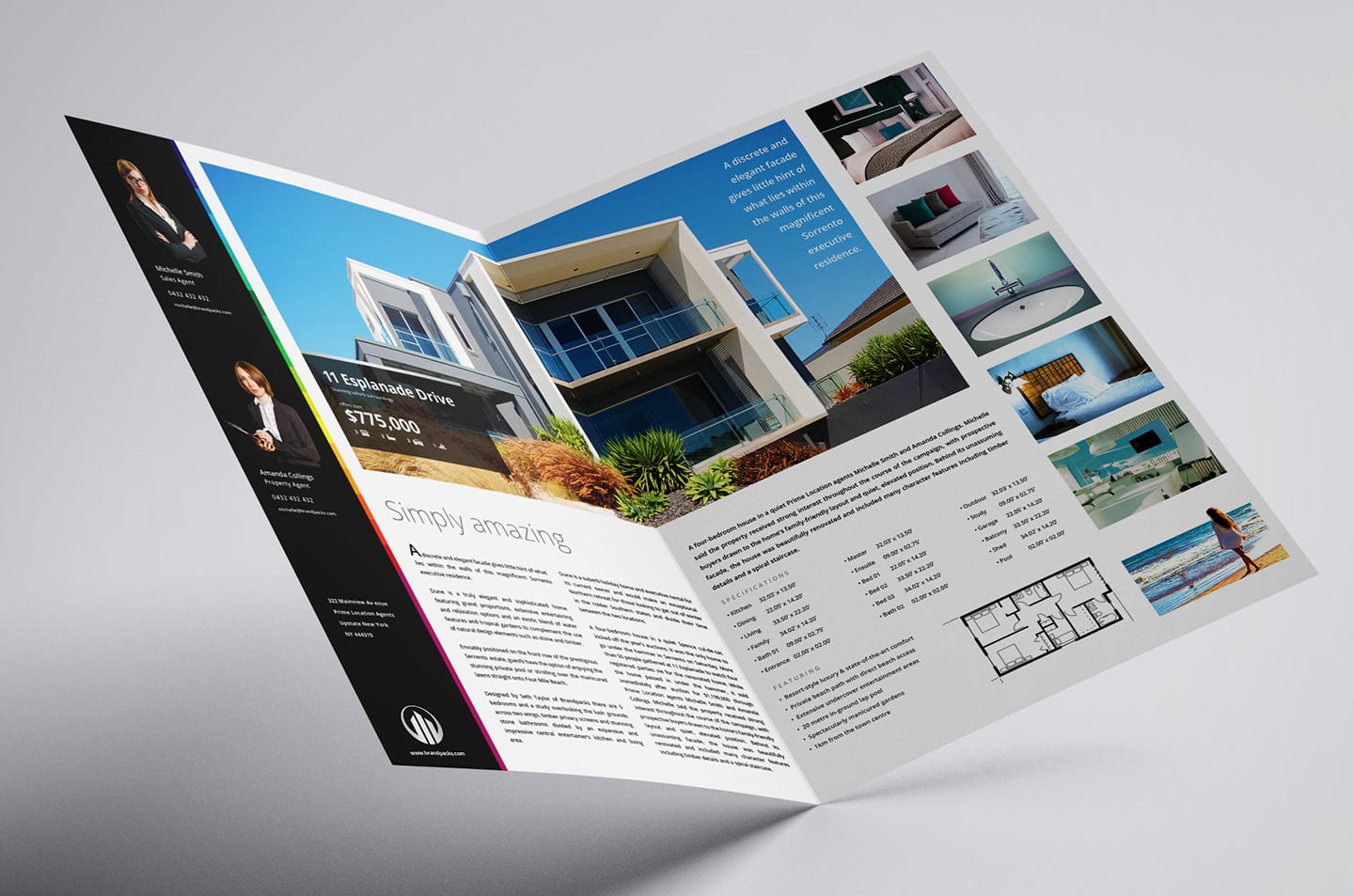
Tips for Successful Real Estate Brochure Design
Designing an effective real estate brochure requires careful consideration and attention to detail. Here are some tips to help you create a successful brochure:
- Keep it Concise: Avoid overwhelming potential buyers with excessive information. Focus on highlighting the most compelling features and benefits of the property.
- Use High-Quality Images: Invest in professional photography or use high-resolution images to showcase the property effectively.
- Utilize White Space: Leave enough white space in the design to create a clean and organized layout. This makes the brochure easier to read and navigate.
- Include Call-to-Actions: Encourage potential buyers to take action by including clear call-to-actions, such as “Schedule a Viewing” or “Contact Us for More Information.”
- Choose Legible Fonts: Select fonts that are easy to read, even at smaller sizes. Avoid overly decorative or complex fonts that may hinder readability.
- Proofread and Edit: Double-check all content for errors, grammar mistakes, and typos. A professional and error-free brochure adds credibility to your marketing efforts.
- Consider the Printing Quality: Choose a reputable printing service to ensure the colors and images are accurately reproduced. Opt for high-quality paper for a more luxurious feel.
Conclusion
Real estate brochures are a powerful marketing tool that helps real estate agents advertise properties for sale. By providing comprehensive information in a visually appealing format, brochures engage potential buyers and generate interest in the property. When creating a brochure, it’s crucial to define your target audience, gather all necessary information, choose a design template, customize the content, and proofread before printing and distributing.
By following these steps and incorporating design best practices, you can create a successful real estate brochure that captures the attention of potential buyers and helps you sell properties with ease.
Real Estate Brochure Template – Download